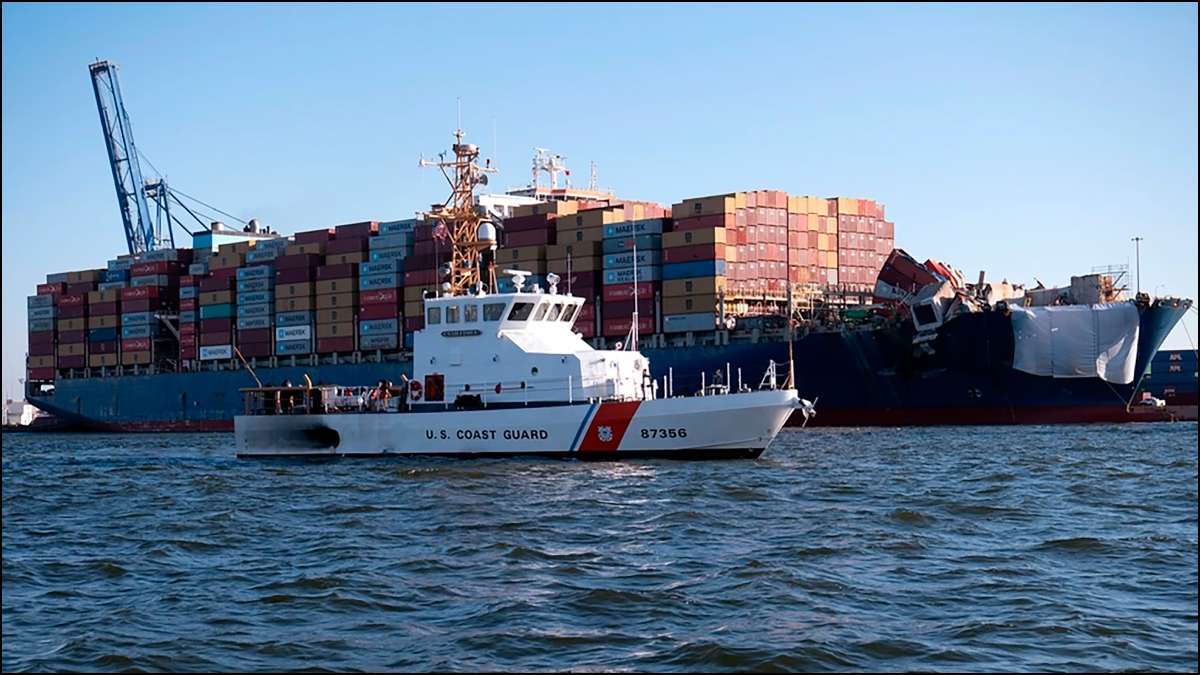
Baltimore: The cargo ship MV Dali, which crashed into the Baltimore bridge in late March, headed out for Norfolk, Virginia after three months on Monday. The 984-foot vessel collided with the 2.6-km-long four-lane Francis Scott Key Bridge over the Patapsco River in Baltimore in the early hours of March 26 after losing power, resulting in six deaths.
MV Dali started moving shortly before 8:30 am (local time) with four tugboats. It is headed to Norfolk, Virginia, for the removal of the remaining containers on the vessel and additional repairs. The trip to Norfolk is expected to take between 16 and 20 hours. There were 21 crew members aboard the vessel during the crash, including 20 Indians and one Sri Lankan.
The vessel is owned by Grace Ocean Private Ltd and was outbound from Baltimore to Colombo and has a capacity of 10,000 TEU, with onboard units totalling 4,679 TEU. The vessel’s deadweight is 116,851 DWT. None of the crew members have been charged in connection with the disaster. FBI and other federal agencies are conducting the investigations.
Some Indian crew members return home
Earlier, eight of the 20 Indian crew members were allowed to leave for India on Friday after nearly three months, while the rest of the crew has been moved to a service apartment in Baltimore and will remain there pending an investigation. Under the agreement, the crew members can return home but must be available for depositions.
The departure of eight Indian crew members including a cook, a fitter and seamen follows a deal approved by the judge. “They’re anxious, under considerable stress considering they don’t know the future. They don’t know when they’ll see their family again or how they’ll be treated here,” Rev. Joshua Messick, director of the Baltimore International Seafarers’ Center and chaplain for the Port of Baltimore told CNN.
What happened on March 26?
The operators of the Dali cargo ship issued a mayday call that the vessel had lost power moments before the crash, but the ship still headed toward the span at “a very, very rapid speed,” Maryland Gov. Wes Moore said. The vessel struck one of the 1.6-mile (2.6-kilometer) bridge’s supports, causing the span to break and fall into the water within seconds.
The ship was moving at 8 knots, which is roughly 9 mph (15 kph). Given the vessel’s massive weight, it struck the bridge support with significant force, said Roberto Leon, a Virginia Tech engineering professor. “The only way the post can resist it is by bending,” Leon said. “But it cannot absorb anywhere near the energy that this humongous ship is bringing. So it’s going to break.”
A National Transportation Safety Board investigation found the ship experienced two power outages in the hours before it left the Port of Baltimore. In the moments before the bridge collapsed, it lost power again and veered off course. The agency is still investigating what caused the electrical failures, while the Federal Bureau of Investigation (FBI) has also launched a criminal investigation.
Impact of the accident
US President Joe Biden said that the crew on board Dali had alerted transportation personnel about losing control of the vessel, enabling authorities to close the Baltimore bridge to traffic before the devastating collision, “undoubtedly” saving lives. The collapse was expected to create a logistical nightmare for months, if not years, in the region, shutting down ship traffic at the Port of Baltimore, a major shipping hub.
Thousands of longshoremen, truckers and small business owners have seen their jobs impacted by the collapse, prompting local and state officials to prioritise reopening the port and restoring its traffic to normal capacity in hopes of easing the economic ripple effects. The accident also created cargo and commuter traffic snarls.
The port is a major East Coast hub for shipping. The bridge spans the Patapsco River, which massive cargo ships use to reach the Chesapeake Bay and then the Atlantic Ocean. The Dali was headed from Baltimore to Colombo, Sri Lanka, and flying under a Singapore flag, according to data from Marine Traffic.
(with inputs from agencies)